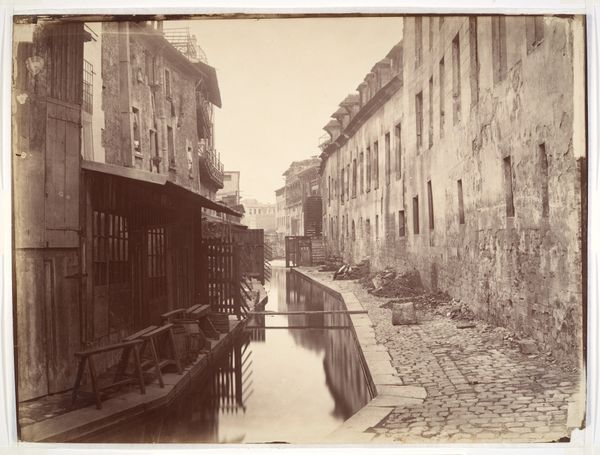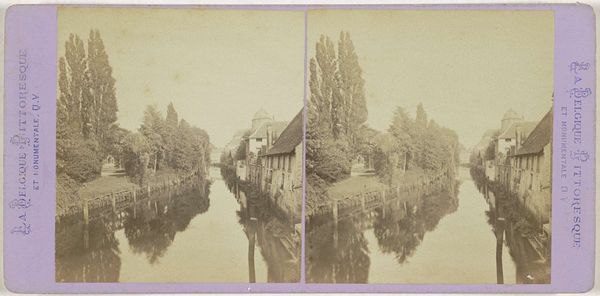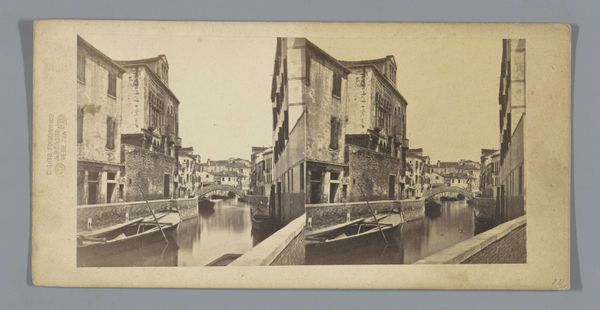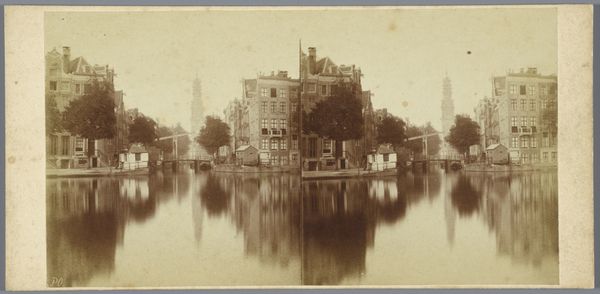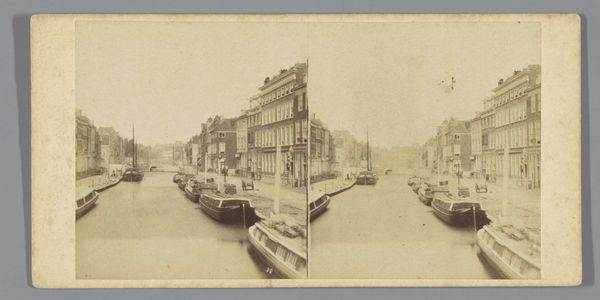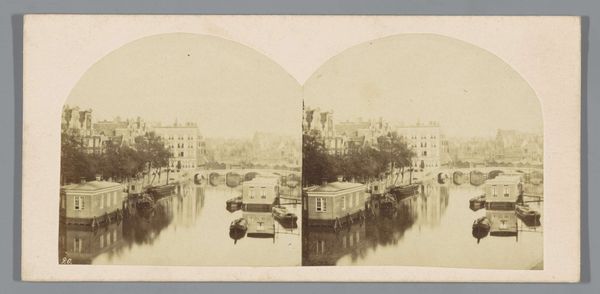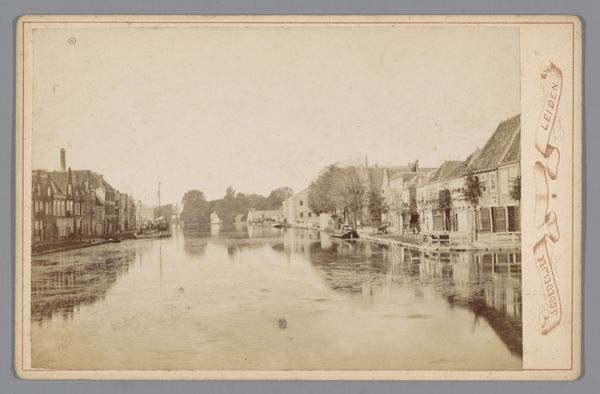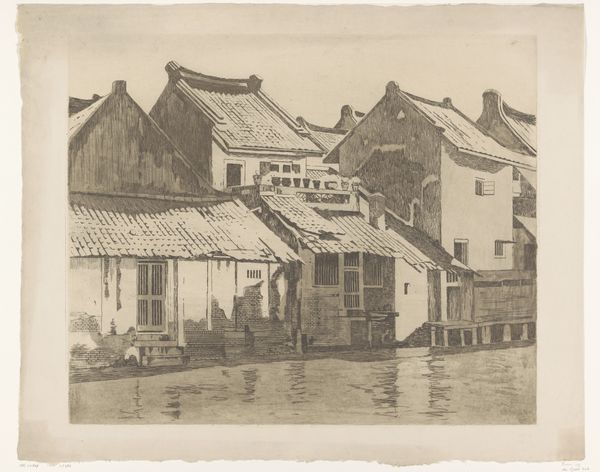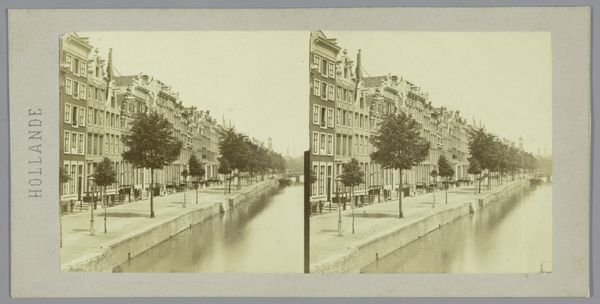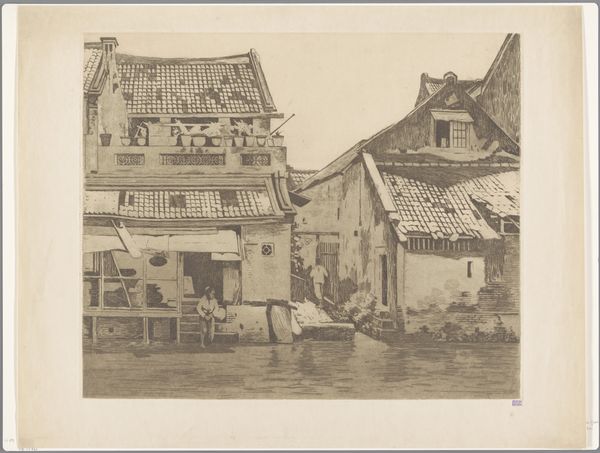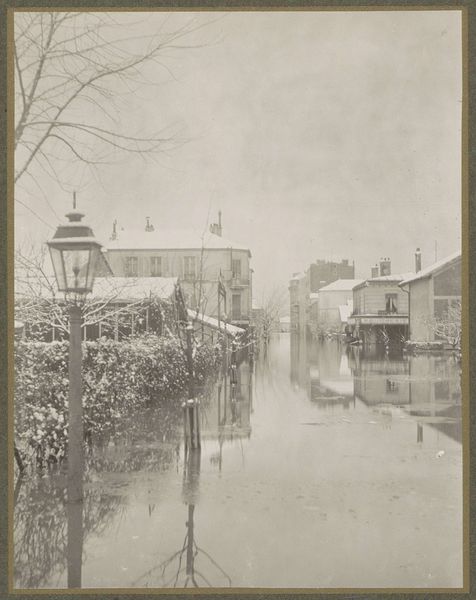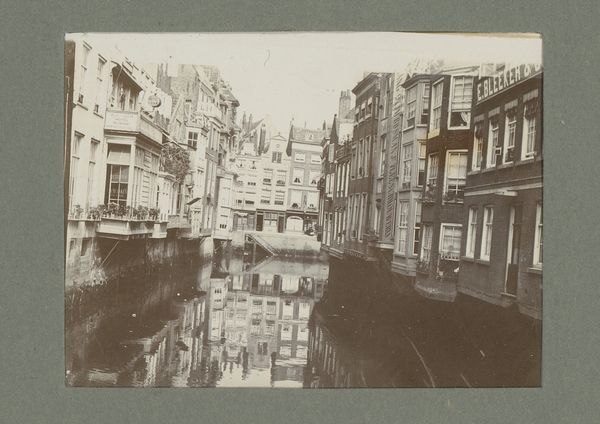
photography
#
landscape
#
photography
#
cityscape
Dimensions: height 87 mm, width 176 mm
Copyright: Rijks Museum: Open Domain
Curator: Welcome. Before us is a photograph entitled "Sint-Geertrui-abdij in Leuven" by Jules Hippolyte Quév al, dating back to between 1866 and 1870. It currently resides in the Rijksmuseum. Editor: The stillness is palpable, isn't it? That water mirroring the buildings... there’s something almost melancholic about the sepia tones. It really feels like a captured moment in time, almost like stepping into the past. Curator: Precisely. Note the sharp verticals formed by the buildings and spire juxtaposed against the fluid horizontal reflections. The photographer masterfully employs a play of light and shadow to emphasize the geometry. Semiotically, we can read the spire as a signifier of the city's enduring cultural and religious values. Editor: But I wonder, what sort of photographic processes did Quév al employ? Early photography demanded long exposures, surely influencing the stark contrast we see in light and shadow. I'm thinking too, about the laborious process of wet plate collodion—coating, sensitizing, exposing, and developing, all before the plate dries. The workers, the equipment, the chemistry involved – that’s all invisible to us now. Curator: The photographic process undoubtedly shapes our interpretation, but within the final image, Quév al controls depth and form through a rigorous deployment of perspective and framing. Notice how your eye is directed upward, guided by these reflections and the converging lines to a distant church spire, acting as the focal point of the composition. Editor: True. The city as artifact… each stone, brick, a product of someone’s labor, a contribution to civic and religious pride. And the photographic print itself is yet another layer in that chain of production, from camera obscura to the gallery wall here today. It asks you to think not only what we see, but also of everything unseen, unacknowledged. Curator: Indeed, and it invites us to look deeper at the constructed reality we interpret from images. Thank you for those insights! Editor: Thank you. It is quite stimulating when form and substance coalesce so beautifully.
Comments
No comments
Be the first to comment and join the conversation on the ultimate creative platform.
